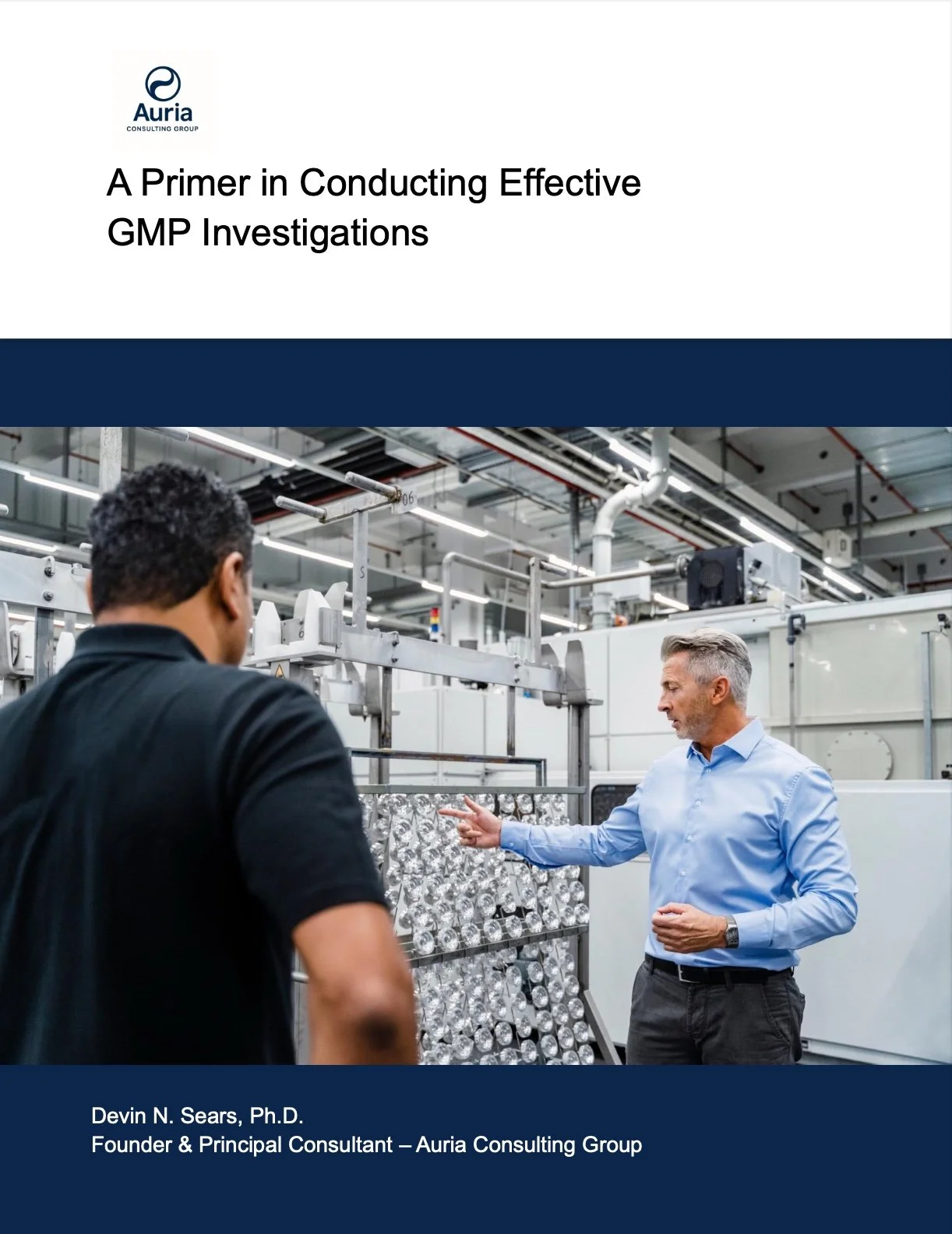 Image 1 of 1
Image 1 of 1


White Paper: Conducting Effective GMP Investigations: A Comprehensive Guide
This white paper provides a comprehensive, practical guide to conducting effective GMP investigations, essential for maintaining compliance and protecting patient safety. It outlines the structured flow of investigation reports, from clearly describing deviations and documenting immediate actions, to systematically identifying root causes using tools such as 5 Whys, Fishbone Diagrams, FMEA, Fault Tree Analysis, and Pareto Analysis. Emphasizing that investigations must move beyond superficial causes like “operator error,” it details how to implement corrective actions that directly address identified failures and preventive actions that strengthen quality systems across operations. The paper also explains FDA and EMA expectations for thoroughness, systematic evaluation, and CAPA effectiveness, reinforcing the importance of clear, active-voice writing that stands alone for regulators. Ultimately, it highlights that robust investigations are not just compliance exercises, but drivers of continuous improvement, operational excellence, and confidence in an organization’s commitment to patient-focused quality.
This white paper provides a comprehensive, practical guide to conducting effective GMP investigations, essential for maintaining compliance and protecting patient safety. It outlines the structured flow of investigation reports, from clearly describing deviations and documenting immediate actions, to systematically identifying root causes using tools such as 5 Whys, Fishbone Diagrams, FMEA, Fault Tree Analysis, and Pareto Analysis. Emphasizing that investigations must move beyond superficial causes like “operator error,” it details how to implement corrective actions that directly address identified failures and preventive actions that strengthen quality systems across operations. The paper also explains FDA and EMA expectations for thoroughness, systematic evaluation, and CAPA effectiveness, reinforcing the importance of clear, active-voice writing that stands alone for regulators. Ultimately, it highlights that robust investigations are not just compliance exercises, but drivers of continuous improvement, operational excellence, and confidence in an organization’s commitment to patient-focused quality.